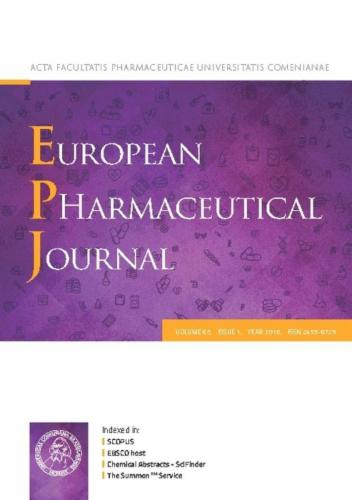通过晶体紊乱改善溶解度:实现Peposertib首次人体试验。
IF 4.7
3区 医学
Q1 PHARMACOLOGY & PHARMACY
引用次数: 0
摘要
Peposertib是一种dna依赖性蛋白激酶的小分子抑制剂,目前正在晚期实体瘤患者的临床试验中进行评估。由于需要多参数优化药物设计,活性药物成分(API)表现出低溶解度,这反过来又需要一种创新的方法来实现快速的首次人体临床试验。根据生物制药分类系统(BCS), Peposertib属于II类,根据可开发性分类系统(DCS)属于IIb类。在多态筛选过程中,发现了晶体无序固态(A2D),与热力学稳定的固态(A2)相比,其体外性能显着提高。无序沿着一个晶体轴发生,导致晶格能量降低,从而导致更高的溶解度。尽管是亚稳态形态,但理想形态A2D的固体材料具有非常高的化学和物理稳定性以及良好的物理性能。在非晶材料的情况下,这些特性往往是相当大的缺点。与非晶相或高度结晶相(通常定义得更好)相比,一个重要的挑战是无序程度的可变性。这个问题是通过开发一种工艺来解决的,该工艺在制造规模上证明了稳健性。通过微应变分析,我们建立了一种可靠的材料表征方法,而热分析进一步有助于识别无序块状材料中较高的结晶部分。它允许快速进入首次人体临床试验,目标是过渡到生物激活制剂,这需要一个更耗时的开发过程。据我们所知,这是第一次不仅发现了晶体学上的无序相,而且还进行了彻底的研究,并因此用于加速进入临床开发。本文章由计算机程序翻译,如有差异,请以英文原文为准。

Improving solubility by crystallographic disorder: Enabling Peposertib first-in-human trials
Peposertib is a small molecule inhibitor of the DNA-dependent protein kinase, currently being evaluated in clinical trials in patients with advanced solid tumours. The active pharmaceutical ingredient (API) exhibits low solubility as a result of the required multi-parameter optimization drug design that in turn necessitated an innovative approach to enable a fast-track first-in -human clinical trial. Peposertib belongs to class II according to the biopharmaceutical classification system (BCS) and class IIb according to the developability classification system (DCS). During polymorphic screening a crystallographically disordered solid-state form (A2D) was discovered which showed significantly increased in vitro performance compared to the thermodynamically stable solid-state form (A2). Disorder occurs along one crystallographic axis and leads to reduced lattice energy and consequently higher solubility. Despite being a metastable morphic form, the solid material of desired form A2D showed very high chemical and physical stability as well as favorable physical properties. These attributes are frequently considerable drawbacks in the case of amorphous materials. A significant challenge when compared to amorphous or highly crystalline phases, which are usually better defined, is the variability in the degree of disorder. This issue was addressed through the development of a process that demonstrated robustness at the manufacturing scale. By employing microstrain analysis, we established a reliable method for material characterization, while thermal analysis further aids in identifying higher crystalline fractions within the disordered bulk material. It allowed fast entry into first-in-human clinical trials with the objective of transitioning to a bio-enabling formulation, which necessitates a more time-consuming development process. To the best of our knowledge, this is the first time a crystallographically disordered phase has not only been discovered but also thoroughly investigated, and consequently utilized to accelerate entry into clinical development.
求助全文
通过发布文献求助,成功后即可免费获取论文全文。
去求助
来源期刊
CiteScore
9.60
自引率
2.20%
发文量
248
审稿时长
50 days
期刊介绍:
The journal publishes research articles, review articles and scientific commentaries on all aspects of the pharmaceutical sciences with emphasis on conceptual novelty and scientific quality. The Editors welcome articles in this multidisciplinary field, with a focus on topics relevant for drug discovery and development.
More specifically, the Journal publishes reports on medicinal chemistry, pharmacology, drug absorption and metabolism, pharmacokinetics and pharmacodynamics, pharmaceutical and biomedical analysis, drug delivery (including gene delivery), drug targeting, pharmaceutical technology, pharmaceutical biotechnology and clinical drug evaluation. The journal will typically not give priority to manuscripts focusing primarily on organic synthesis, natural products, adaptation of analytical approaches, or discussions pertaining to drug policy making.
Scientific commentaries and review articles are generally by invitation only or by consent of the Editors. Proceedings of scientific meetings may be published as special issues or supplements to the Journal.

 求助内容:
求助内容: 应助结果提醒方式:
应助结果提醒方式:


